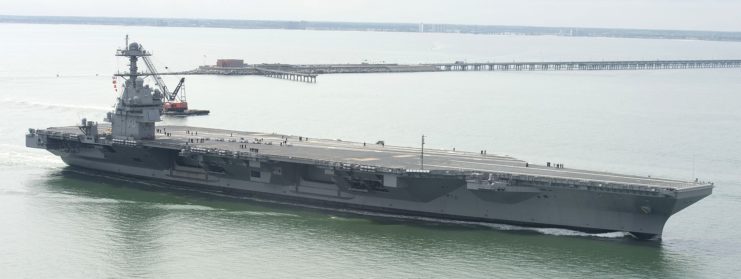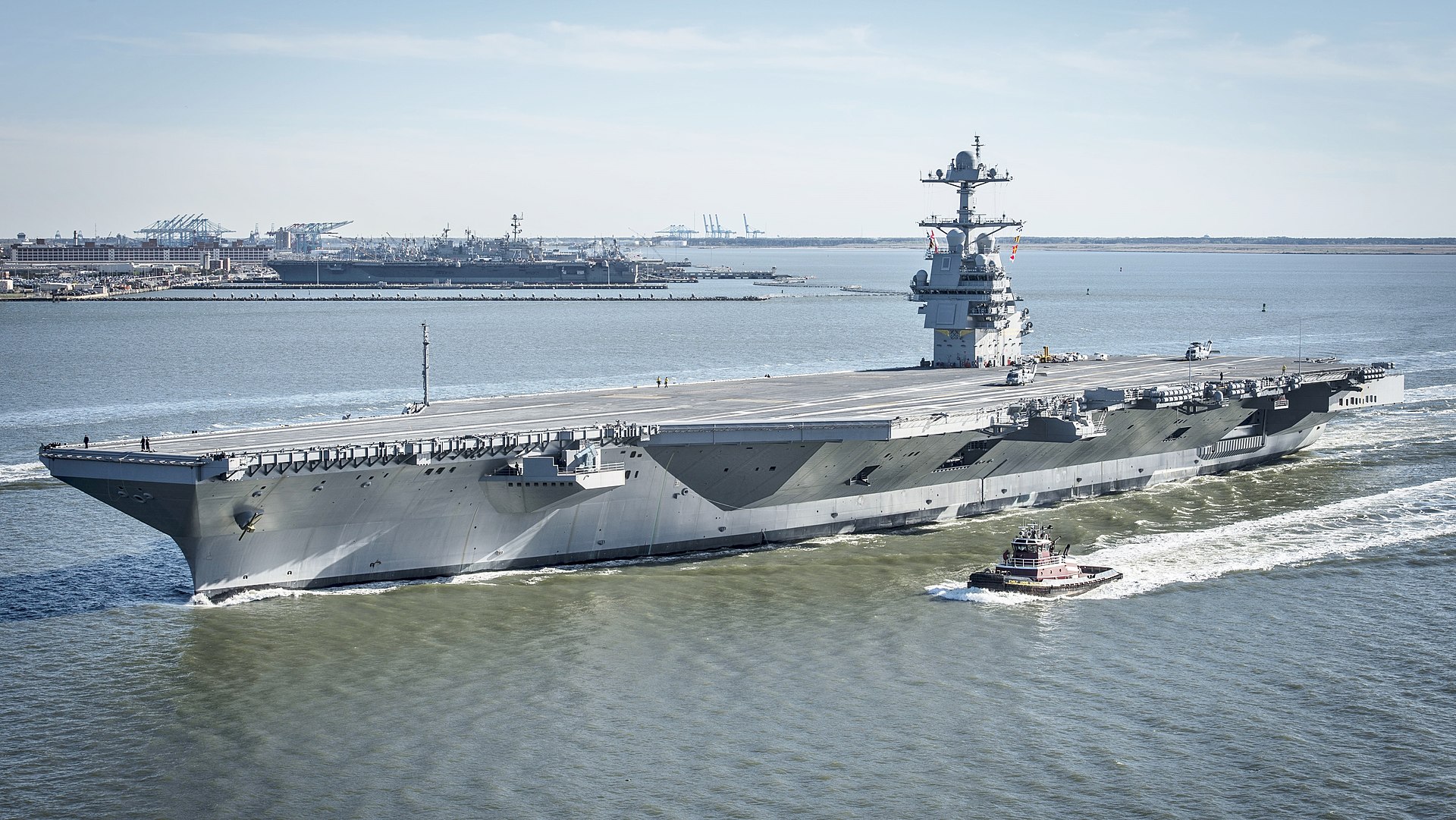The US’ newest aircraft carrier, the USS Gerald R. Ford, is finally expected to deploy next year, after years of setbacks and delays. The enormous vessel is the largest warship ever constructed and has cost around $13 billion. It will be one of the most technologically advanced ships on the planet when it reaches service. Despite this, setbacks related to the giant carrier have meant it is years behind schedule.
The Gerald R. Ford
The USS Gerald R. Ford will come loaded with new equipment, technology, and systems that will make it a truly terrifying force for any navy to come up against. It is equally large as its predecessors from the Nimitz-class, but is much more efficient on space, making more room for critical systems. One of the more interesting features of the new carrier is its electromagnetic aircraft launch system, which replaced the traditional steam-powered catapults.
With the latest on offer from the US Navy, Gerald R. Ford will be much more capable than its predecessors.
Construction of the carrier began all the way back in 2005, with 75 percent of the ship’s structure being complete by early 2012. By May 2013, the ship reached 100 percent completion and was scheduled to be delivered by 2015. However, this would be pushed back numerous times, delaying its delivery for years. It was expected to deploy in 2018, but this is now expected to occur in 2022.
Many of the delays have been caused by bugs relating to the new technologies being used, but the ship’s complicated new launch system and weapons elevators have remained and source of trouble.
Light at the end of the tunnel
Fortunately, this looks set to change though, as according to Rear Admiral Gregory Huffman “everything is on track.”
“We’re still looking to get out as scheduled after the six-month availability. No big show-stoppers that they’ve come across at all. So very, very positive news coming from the captain and from the shipyard. And then as we come out of that, I think we’re going to be set very well to get back in that operational mindset and get ready for the deployment,” Huffman told USNI News.
The news comes after the carrier finished its important shock trials in the summer, which subjected the ship to immensely powerful explosives detonated nearby. 40,000 lbs of explosives were used to see how Gerald R. Ford would fare in real-life battle conditions.
The ship passed the test, although it did experience a few issues as a result. “We did have some things break, but we will fix them,” the commanding officer of the Gerald R. Ford said at the time. “From a severity standpoint, I’d like to say we had zero catastrophic failures on the ship, zero situations where we had flooding, zero fires. All that is pretty significant.”
Getting the Ford operational

The Navy wants the carrier at an operational status not only due to budgetary issues but also because the carrier will simply be an incredibly powerful and important tool in their arsenal. The addition of the USS Gerald R. Ford will increase the Navy’s capabilities, which is already the best in the world.
“Getting the Ford-class out there with its capabilities is basically just going to increase the number of carriers and carrier strike groups that we have available to meet the demands. And so that I think is just going to give us more flexibility,” Huffman said.
“Then when you couple that with the projected increase in what the Ford should be able to do, that’s going to just provide the combatant commanders and other folks with just more options and more things at their fingertips that they can use.”
The Gerald R. Ford-class of carriers were designed to maximize the number of sorties flown by about 30 percent, thanks to their weapons elevators and electromagnetic aircraft launch systems. The latter no longer relies on steam pressure, which must be generated and routed to the flight deck, a process that takes up a lot of space. This system is able to launch more aircraft in a given amount of time while requiring fewer crew members.
Even as the USS Gerald R. Ford is reaching operational status work continues to implement new systems onboard the ship, like the planned addition of the F-35 Lightning II.
“The Ford is designed with more of that modular mindset,” Huffman said, which makes it “easier to adapt and flex as new equipment comes online, as we start looking at what new air wing composition is going to be and new technologies are presented.”
Let’s hope that the USS Gerald R. Ford is not struck down by more technical delays, and reaches the high seas soon in good time.
